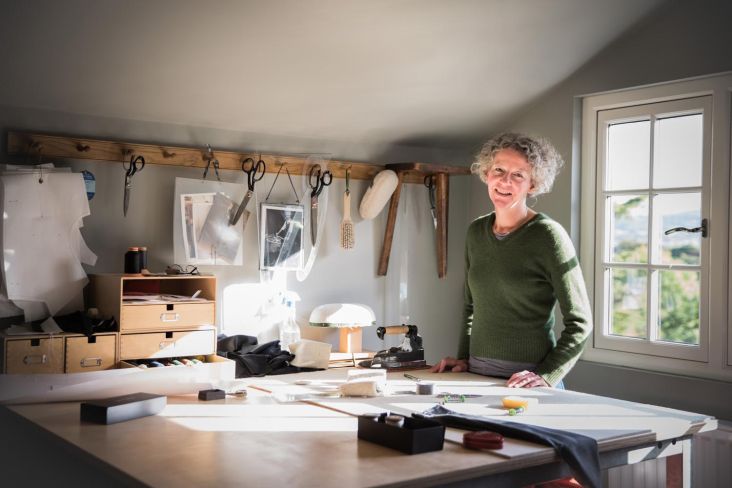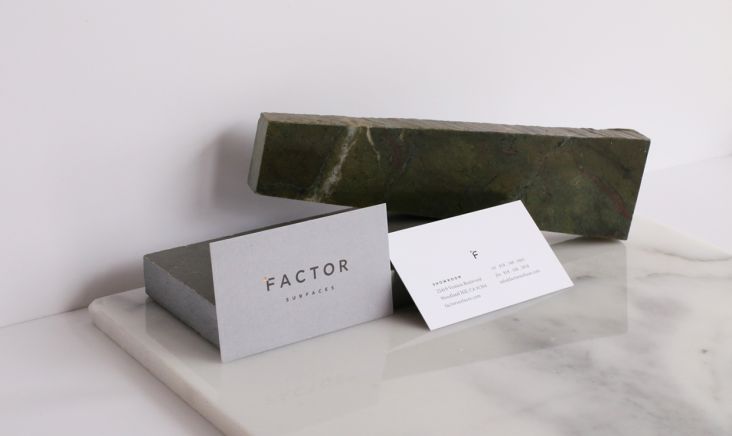Mimi Young of Behavior Design on content consumption, designing for users and how agencies are changing forever
From expectations in experience, response time, content length and formats – the 'content consumption bar' has been raised. A recent Google survey found opinions on a site are formed in just 17 milliseconds. For many brands – their website is the one chance to make a first and lasting impression.

As a freelance designer or consultant, how can you help your clients to balance the "to the point" visitor while providing enough information to those looking to dive deeper? According to Mimi Young, successful websites are delivering content that is customised to the end user – in a format dubbed "bite, snack and meal" to meet the three most common needs of today.
Mimi is Co-Founder of Behavior, an award-winning boutique interactive design studio in New York City with a client roster that has included HBO, JPMorgan Chase and CNN. We chatted to Mimi about her career, her agency and also picked her brains to find out more about how she sees content matching today's consumption and browsing habits and how simple UX design changes and thinking can increase web conversions to drive ROI...
How did you get started? Where did you study? What was your first job?
I studied both Industrial Design and Fine Arts at the Rhode Island School of Design, where I received my BFA. I wasn’t positive that I wanted to pursue being an artist but I was still interested in the contemporary art field, so I interned at a number of art institutions and eventually landed a job at the New Museum of Contemporary Art in New York. From there I worked my way up to the role of Curatorial Coordinator and I learned a lot about expressing ideas, thinking analytically as well as how to work with groups of disparate people to get the job done.
I eventually decided not to pursue a curatorial career and went to graduate school for my MFA in Computer Art at the School of Visual Arts. This was when the Internet boom was just getting started. On the very last day of school, I was hired by my then 'Lingo' teacher and founder of a global consultancy, who eventually became my boss. And so my career in digital began.
You launched Behavior Design in 2001... what led you to starting your own business?
The global consultancy that I was a part of, like many other digital agencies at that time, imploded as the tech bubble burst. It was at this point that myself and four other discipline leads within the design group decided to start our own agency with the vision that we could run our own firm, leaner and wiser – avoiding all the pitfalls of where we came from.
Tell us more about what you do at Behavior Design? What's your specialty?
Behavior is a boutique user experience strategy and design firm. At our core we are UX strategists that are content-centric in our approach. This may mean rolling up our sleeves with subject matter experts of all types, from curators to auditors; or crafting interactive narratives for various HBO programmes. At the end of the day we are creating design systems for brands and their users.
Your approach involves 'Behavior Mindfulness'. What does this mean? How is it applied to projects?
We purposely chose ‘Behavior’ as our company name to reflect our very conscious focus on designing for users first and foremost. Understanding the underlying motivations of users within any digital system we believe is key to delivering a successful experience that increases the bottom line.
The term ‘Mindfulness’ originates from Buddhist meditation and relates to purposeful awareness (of your thoughts, feelings, and sensations). ‘Behavior Mindfulness’ is a term we use for our own UX practice as the conscious consideration of user intentions and motivations. It is the idea that all design decisions, large and small, inherently must take a user’s functional, informational, and emotional objectives into account in order to create a positive and fulfilling experience.
A recent Google survey found opinions on a website are formed in just 17 milliseconds. When most brands get one chance to make a first and lasting impression, how can they grab and keep hold of visitors to their website?
Relevance is the key to holding attention and keeping it. Choreographing a user experience that provides content in bites, snacks and meals is one of the strategies all brands should employ. When visitors first come to a site, they most likely want to get a lay-of-the-land.
Presenting bite-sized teaser content makes your offering scan-able and invites deeper engagement if/when the visitor sees fit. Summary or snack-sized content provides further exploration, exposing additional detail on demand. Therefore, users are only taken to detailed content upon their own interest. If done right, a brand can convey their brand message, value, and offerings with that very first impression.
"Relevance is the key to holding attention and keeping it. Choreographing a user experience that provides content in bites, snacks and meals is one of the strategies all brands should employ."
So content remains to be king. But a lot of content has turned into 'churn' in recent years. How can brands strike the right balance between content quality and quantity?
For the most part, ‘less is definitely more’. Having lots of rich content doesn’t do brands much good if their audience is not accessing it. Quality is certainly important, but brands need to also focus on how they are surfacing content to users. If you can’t find it and it doesn’t seem relevant to what you are looking for, the endeavour has failed, or worse, you have now put a negative spin on your brand.
Any quick tips you can offer for simple UX design changes that increase web conversations?
It’s important to identify your main target audience and what they are most likely looking to do on your site, as well as tweak your site to provide a clear path to accomplishing these user goals. That means removing distractions and roadblocks. For instance, if you are looking to drive users through an application process, be careful not to cross-sell them when they are about to hit 'submit'. It sounds obvious but you would be surprised how often the wrong options are presented at the wrong time.
There'll be a lot of designers out there struggling to get started. What pearls of wisdom can you share that helped you to become a success?
Listen, Listen, Listen. The key to being successful is hearing what clients (and their users) are looking to accomplish. Design professionals are like doctors and the patient intake process is so very critical to identifying client challenges. You can only prescribe solutions that work when you have clearly understood the nuances of the issues. Designers and UX practitioners should come to their projects without a predisposition to the problems and the answers.
That's great advice. So what's your proudest project to date? And why?
The launch of RedHat.com. Other companies had failed before us. This project required us to breakdown the traditional agency / client barriers completely and work extremely collaboratively with a company that prides itself on an open source culture, one with multiple stakeholders and multiple voices at every level. This meant that we could not sail into their offices and magically come up with a website that would better speak to their brand. Our job was to help facilitate the conversations and work as one to collectively come up with the final solution. It was equal parts UX strategy/design challenge and cultural/organisational process challenge. It launched with great success both internally and externally.
"Design professionals are like doctors and the patient intake process is so very critical to identifying client challenges. You can only prescribe solutions that work when you have clearly understood the nuances of the issues."
What do you find the most challenging aspects of your work?
For a small business, it’s challenging to wear many hats at once. As an industry we have to embrace change and be open to rethinking what we once thought were golden rules. These are challenges that keep us on our feet and always learning!
You're based in New York. Do you think location still matters for business?
Being in Manhattan does add credibility to the perception of your company as being in the heart of activity and competition. However, we have many clients outside of New York. In order to make this work we travel for face-to-face meetings at critical project milestones but, more importantly, we are sensitive to the cultural differences of doing business in different states and environments. Coming from New York City can be both a plus and a minus.
What's happening next? Do you have any interesting projects coming up that we should know about?
We are currently working on the University of Miami School of Business website which will launch by the end of the year. They have a great brand story to tell as they offer a global perspective on business education and are situated in Miami – the crossroads of the Americas. We are excited to reimagine their digital expression to better reflect who they are.
To find out more about Mimi Young, you can follow her on Twitter or visit Behavior Design's website at www.behaviordesign.com. If you have any further questions for Mimi, just comment below.




 by Tüpokompanii](https://www.creativeboom.com/upload/articles/58/58684538770fb5b428dc1882f7a732f153500153_732.jpg)


 using <a href="https://www.ohnotype.co/fonts/obviously" target="_blank">Obviously</a> by Oh No Type Co., Art Director, Brand & Creative—Spotify](https://www.creativeboom.com/upload/articles/6e/6ed31eddc26fa563f213fc76d6993dab9231ffe4_732.jpg)
















